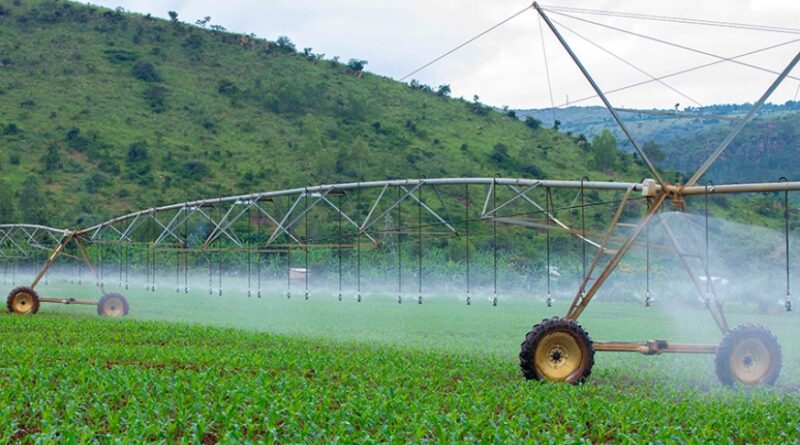Can Specialized Agricultural Banks Drive Rwanda’s Agricultural Growth Under the NST2 Program?
The Government’s NST2 Program is Expected to Transform Agriculture, Boost Productivity, and Foster Modern, Well-Capitalized Farming
The agricultural sector is a key pillar of Rwanda’s economy. For instance, in the first quarter of this year, it contributed 25% of the Gross Domestic Product (GDP). In the second quarter of this year, the sector provided employment for 39.6% of the entire Rwandan workforce.
Under the Government’s program to accelerate development, known as NST2, it is anticipated that the agricultural sector will grow by 6% annually, with production expected to increase by 50% over the next five years.
Achieving these goals will require concerted efforts from all stakeholders, including the government, private sector, and other partners. It will also demand finding solutions to various challenges still present in the sector, such as climate change and access to capital for farmers.
Can These Challenges Be Addressed?
Some suggest that establishing a specialized bank dedicated to supporting agriculture, similar to how Umwalimu SACCO (a savings and credit cooperative for teachers) serves teachers, could help the sector achieve its set goals.
Agricultural banks exist in African countries like Nigeria and Kenya, where they have played a significant role in boosting the agricultural sector.
Could Such a Bank Be the Solution?
In an attempt to answer this question, IGIHE—the source of this information—spoke to agricultural experts and researchers from countries where such banks have played a critical role, such as Nigeria and Kenya, as well as within Rwanda.
Jean Paul Ndagijimana, the Director of AGRA (Alliance for a Green Revolution in Africa) in Rwanda, believes that merely establishing a specialized agricultural bank is not sufficient to solve the problems in the sector.
He stated, “It is not a long-term solution, and many countries do not have agricultural banks. What is needed is to examine how the existing banks collaborate with farmers. For instance, only 6% of all loans are allocated to agriculture, which shows there is something not working well.”
He emphasized the importance of collaboration between the government and private sector, saying, “It requires partnership between private entities involved in agriculture and banks providing them with loans. We must all work together to simplify these processes, as every party has its own expectations on how things should be done to achieve the common goal.”
This view is shared by Michael Misiko, Director of The Nature Conservancy in Africa, an organization focused on protecting trees and water resources to ensure environmental sustainability.
Misiko, a Kenyan expert in agriculture who has lived in Rwanda since 2003 and traveled across the country assessing agriculture, agrees that while such a bank may not solve all agricultural problems, it could serve as a catalyst to start addressing them, with support from other sectors.
He said that for the bank to deliver the needed results, its mandate should not be limited to providing loans but should extend to addressing other issues that hinder agriculture.
He remarked, “Banks like these should not only focus on the loan issue for farmers, but also look into other needs that farmers have to ensure productivity. This could include helping to build infrastructure, providing knowledge, and other support that makes farming more productive overall.”
He added, “A bank itself is not the solution to all problems in agriculture, but it can be used to find solutions to many issues. Simply giving money without considering the knowledge of those who use it, the production chain, or access to markets will change nothing.”
The Risk of Losses is a Major Agricultural Challenge
For Ndagijimana, although a specialized bank might not be necessary, the government must address the issue of risks in agriculture, which is one reason commercial banks avoid the sector.
He explained, “What is needed is to reduce the risks in agriculture. Agriculture depends on the climate, and the climate is unpredictable. The Rwandan government did well to introduce agricultural insurance.”
He also emphasized the need for government-bank partnerships to lower interest rates on loans for farmers.
He remarked, “Another important factor is reducing the interest rates on loans for agriculture. Someone who is going into commerce and someone who is farming should not be required to pay the same interest rates on bank loans.”
This, he said, should be complemented by a loan repayment system that aligns with the nature of agriculture, rather than the standard repayment methods used by banks. Banks typically require loan repayments after a fixed period, which does not correspond with agriculture since harvests are seasonal, making regular repayments difficult.
He stated, “Another issue is the repayment process. Banks, after giving you money, expect you to start repaying immediately, but a farmer only harvests after some time. Addressing all these issues would help.”
The director also mentioned that BDF (Business Development Fund) operations need to be reformed to help more farmers access loans with guaranteed security.
On the other hand, Dr. Mel Oluoch from Nigeria believes that it is crucial for African governments to reduce their reliance on domestic bank funds, as this constrains the commercial banks’ ability to invest in high-risk sectors like agriculture.
He explained, “African governments are showing interest in raising funds from domestic banks by selling treasury bonds. This is a good investment for banks as it provides high returns with minimal risk.”
However, he added, “The problem is that when banks invest heavily in these bonds, they lose the capacity to invest in other projects, including agriculture, because the risk of losses is high.”
He concluded that governments should encourage commercial banks to find solutions to the economic challenges faced by African nations, with agriculture being a priority.

